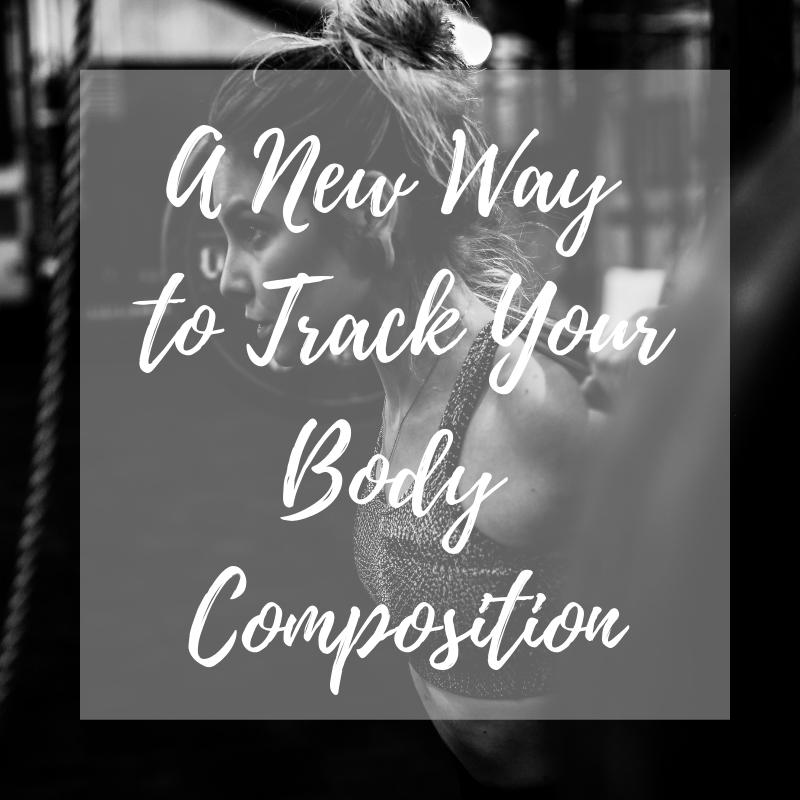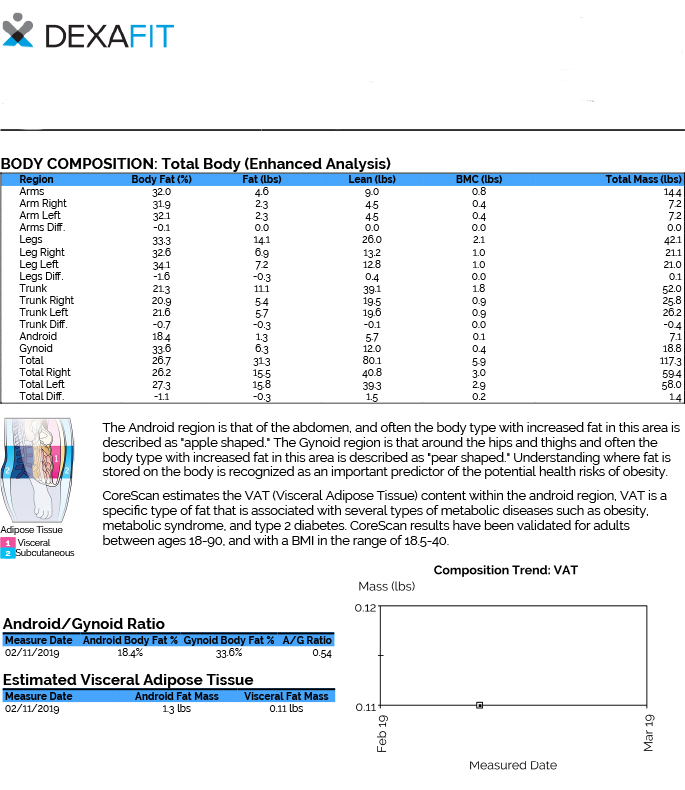
Have you ever had a body composition analysis? Knowing the ratio of your body fat to lean tissue is essential, and it’s not just a tool for athletes and Olympians. Not only is it a predictor of your weight but also for high blood pressure, diabetes, and other health risks. When you think of measuring body fat, the age-old method of using a caliper comes to mind. Caliper’s pinch and measure several areas across your body, giving you an estimate that could have a 5% – 15% margin of error. Today I wanted to share how you can track your body composition measurement with a new method called DEXA SCAN. It’s easy, accurate, and non-invasive.
DEXA SCAN uses dual-energy absorptiometry to give you precise body composition results (1% – 2% margin of error)! The amount of radiation used is very low – less than a day’s exposure to natural radiation. It’s been FDA approved to quantify your lean muscle mass, visceral fat to correlate the risk of hormonal imbalance and disease, bone density to identify osteoporosis, and also measures how you compare to others in your age grouping. DEXA has also changed how people view weight management. It’s great if you lose weight but you want to know if that weight loss comes from fat or lean muscle mass.
How DEXA SCAN Works
I used the DEXA SCAN locator to pick and book an appointment online. Once scheduled, you are asked to complete an online pre-test journal. Basically, it’s a quiz to gather additional information about you, including your fitness activity and goals.
There’s no pre-scan prep except to wear comfortable clothes and not to workout immediately before your scan. The scan itself is painless and takes about 5 – 6 minutes. You just relax on the table while the body scanner does its work.
DEXA SCAN Results
Your results are available immediately. The technician sits down with you to review them in detail. I always think it’s helpful to see visuals. I’ve always worked hard at fitness and it’s pretty cool to see your body mapped out. The data shows:
- Your body composition is broken down by body part, fat and lean muscle mass.
- Your body’s muscle mass symmetry.
- The percentage of visceral fat, and where it is stored. Visceral fat is the abdominal fat that surrounds your organs. Carrying more fat in this area puts you at risk for heart disease, high blood pressure, and type 2 diabetes.

Bone health is one thing I’m more concerned about the older I get. When I sprained my ankle and was x-rayed back in my 20’s, I remember the ER doctor commenting how high my bone density was. I’ve been curious if that was still the case. A T-score of -1 or above is normal bone density. Most women my age fall into the light blue area on the chart (-1 to -2). I was happy to see that that little square on the top in the green (+1.7), and that my bones are still strong.

Your data is saved so if you are using it to track your fitness goals, you’ll be able to compare results and see how you are progressing. If you’re interested in tracking your body composition measurement with DEXA Scan, they’re pretty affordable. The cost of the scan varies by location, but the average cost is around $150. You can find a location here.
*I was provided a no-cost DEXA SCAN in exchange for my honest review

As always, thank you for reading!
If you liked this post, you can subscribe here or follow me on Feedly | Bloglovin | Instagram | Pinterest | Facebook
Linking up here.



Leave a Reply